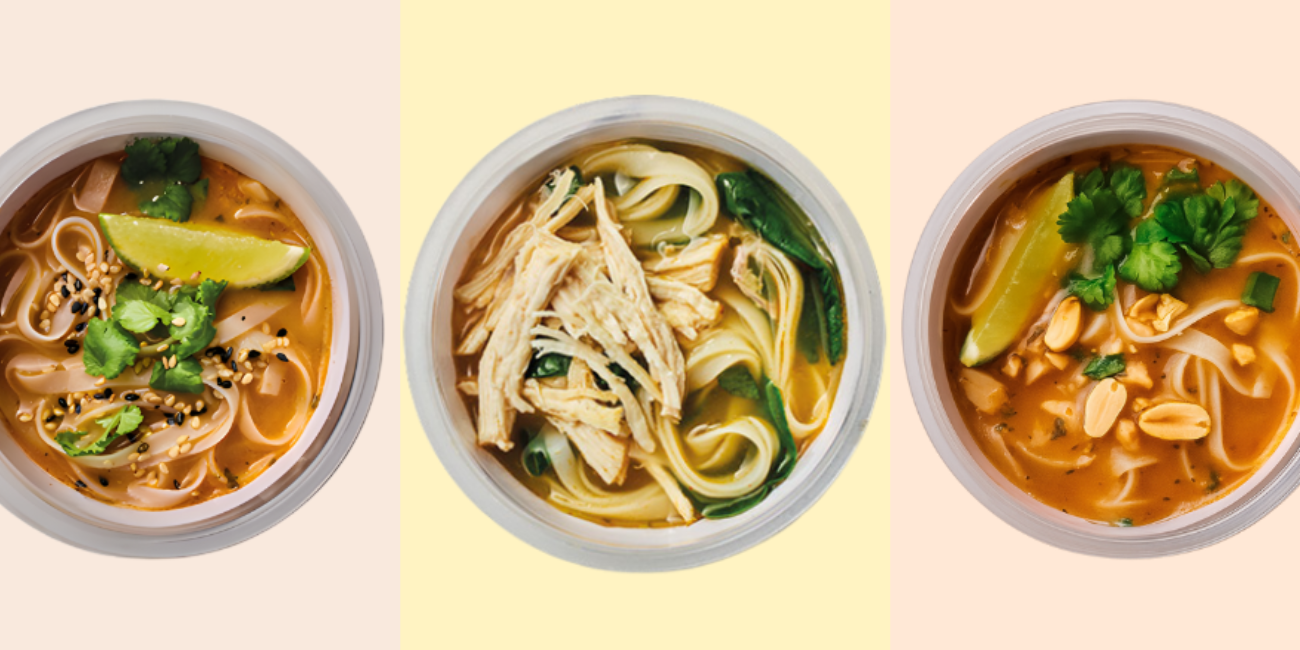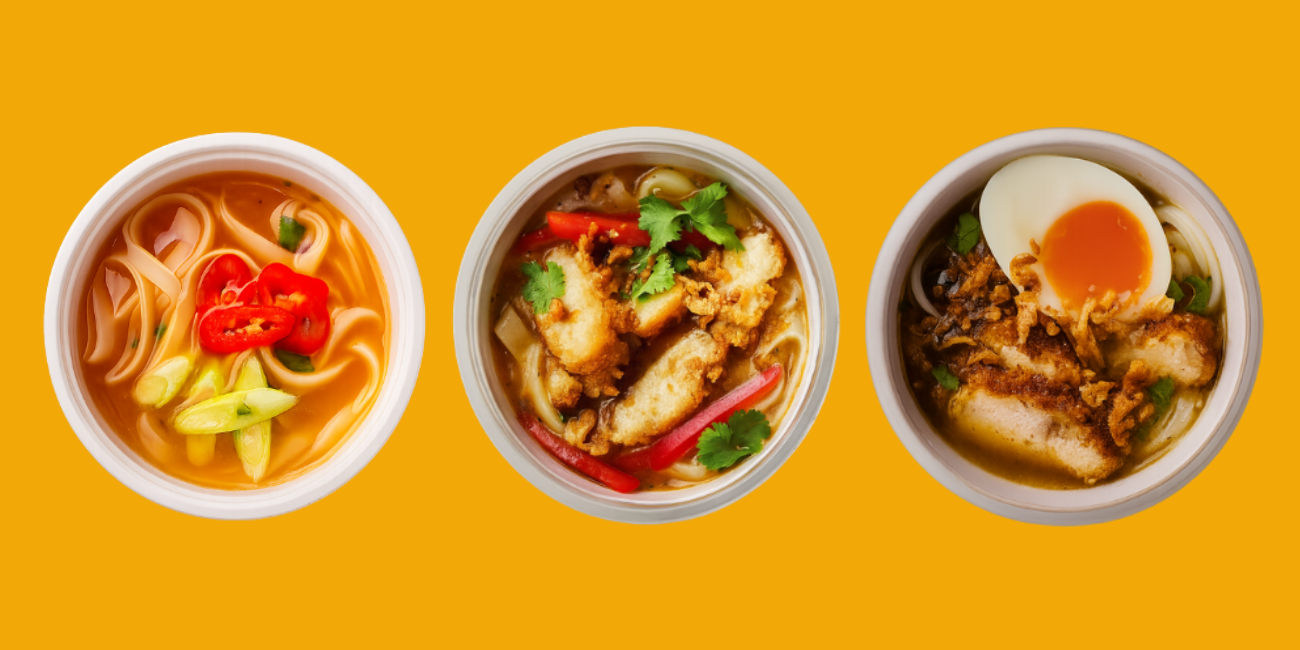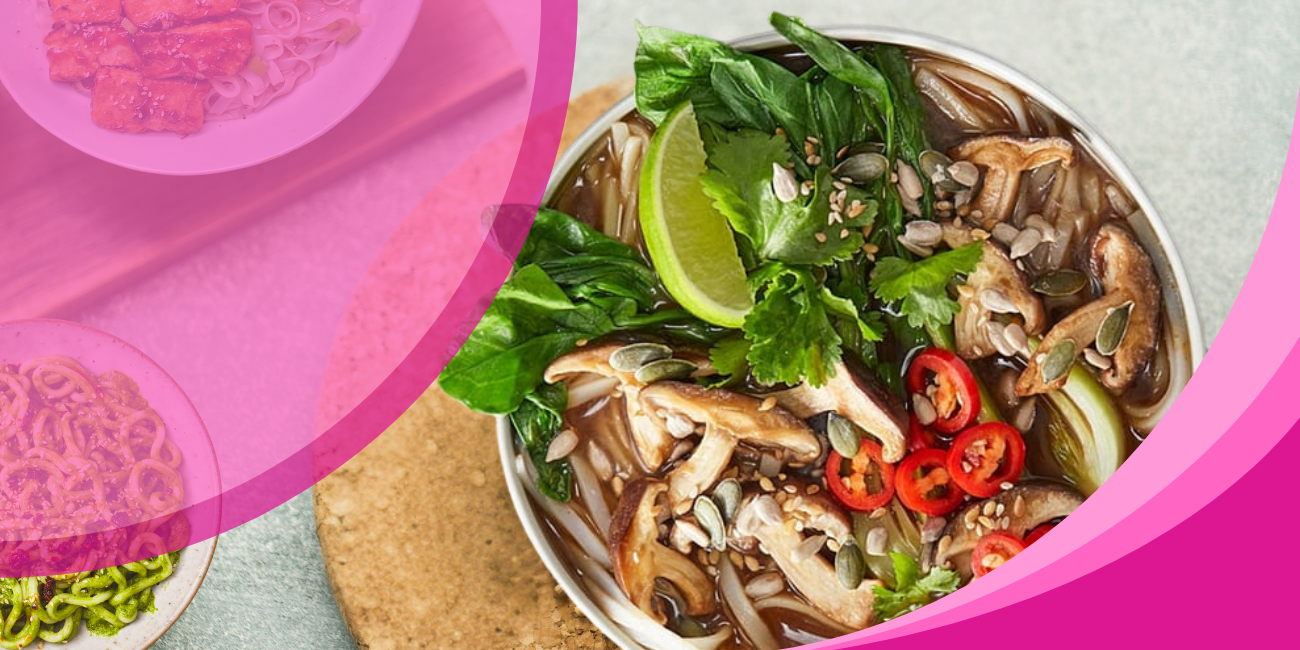I write this blog sat on my sofa looking at the rain outside. It’s the August bank holiday. I don’t think I’ve seen the sun in about two weeks, summer feels well and truly over… I don’t really remember it even starting?!
The silver lining in all of this is that we can hunker down and enjoy proper warming comfort food, and where better to start than with a big bowl of ramen. Long gleaming noodles and rich steaming broth, with all sorts of delicious toppings – it’s a Friday team lunch go-to here at itsu HQ.
I was lucky enough to go to Tokyo a few years ago when visiting Yoshihiro [who makes our incredible miso], and had some of the best ramen I’ve ever tried – there’s a ramen restaurant [or ramen-ya] virtually on every street corner!
But what really is ramen – how do you make it and what’s the history behind it?
Ramen is one of the most popular dishes in Japan: a noodle soup dish thought to originally have been inspired by noodle soups served in restaurants in China. It consists of wheat or egg noodles served in an umami-rich broth, with sliced meat (traditionally pork belly), vegetable toppings and a slightly-more-than-soft-boiled egg. If you’ve spent any time in Japan, or with Japanese people, you’ll know how much Japan loves ramen – ramen is available in every city, town, and village. There is even a famous museum dedicated to ramen in Yokohama!
So What Makes a Good Ramen?
The Broth
The heart of this dish lies in the broth, a labour of love usually cooked for over 12 hours creating the deep rich flavours that make ramen so popular. There are hundreds of variations of ramen depending on what region of Japan you’re in, usually categorised by their different broth. Let’s take a look at the most well-known bases:
Shoyu Ramen – Shoyu ramen soup is distinguished by its brown clear broth usually made with chicken, flavoured predominantly with soy sauce. It’s the most common type of ramen, and can vary depending on what region you’re in.
Tonkotsu Ramen – Tonkotsu Ramen is a style of ramen made with a thick, rich, white broth made with pork bones, and thin, straight ramen noodles (or sometimes wavy). This ramen was originally born in Kurume before spreading to Hakata, Fukuoka and beyond. A Tonkotsu broth is cooked for over 12 hours at a constant boil, before being combined with secret motodare, a concentrated base of ingredients to create the final soup.
Shio ramen – Shio, meaning ‘salt’ in English, is a lighter, clear ramen broth made with chicken, pork, konbu and fish stock (either mixed or on their own) seasoned heavily with salt. This is actually the oldest of the ramen bases, originating in Hakodate with flavour ties to the original Chinese style noodle soup bases.
Miso ramen – Miso ramen is the youngest of the ramen bases, originating from Hokkaido in 1955. It is a thicker, more hearty broth made with fermented soybean paste for a deep umami flavour.
The Noodles
It’s not just about the broth however, the right noodles are paramount to the perfect ramen. They must have the right thickness, shape, bounce and chew. A lot of this also comes down to preference, you might prefer your noodles soft, or hard, or sometimes simply submerged to remove the noodles flour dust then served.
When most people in the UK think about ramen, you think of the iconic straight wheat noodles you find in many restaurants’ chicken ramen, or when buying noodles in supermarket stir fry meal deals. However, ramen noodles can vary hugely: they can be thick, thin, or flat like fettuccine, and differ in colour from white to yellow. Now you’re beginning to understand why there are so many different types of ramen!
The Toppings
The final element which finishes off every bowl of ramen are the toppings. Here are some of the most popular toppings you’ll find on offer in ramen shops:
Chashu [or Chasyu] pork: a widely considered the topping of all toppings. Made from quality pork belly, slow simmered for 4 hours in soy, mirin, sake and sugar. This is easily the most popular ramen topping and is served with any of the ramen bases mentioned above.
Narutomaki: is a type of Kamaboko, a white and red fish cake made by curing and steaming pureed fish into loaves. The pink swirl in the middle of it represents the well-known tidal whirlpool near the city of Naruto.
Ajitsuke Tamago/Seasoned egg: a soft-boiled egg that’s been marinated in soy and mirin. This gives the outside a distinctive stained colour and makes the egg sweet & salty.
Seaweed: a small sheet of Nori [flatten dried & toasted seaweed] is often tucked into the edge of the bowl, or sometimes broken up over the top as a garnish.
Other garnishes: you can really add anything you like to add some crunch or spice to your ramen. Some popular choices include bamboo shoots, sliced green onions, chilli flakes or even a squeeze of fresh lime.
Not to be Confused With…
Noodles in a broth with toppings are enjoyed all over the world, and different cuisines and countries have given this combination their own spin.
Perhaps the most well known here in the UK is the Vietnamese pho, which differs from ramen in that the broth is much lighter, the noodles are rice noodles, and the meat beef rather than pork belly. You’ll often find pho topped with a huge handful of fresh fragrant herbs like Thai basil.
Laksa is another favourite, originating from Malaysia and made typically with vermicelli or thicker rice noodles, seafood and coconut curry.
Authentic ramen, and the love that goes into it is what inspired our brilliant’broth recipes. You can read more about that here.
Why not try some of our easy ramen recipes using brilliant’broth & be sure to let us know what you think!




